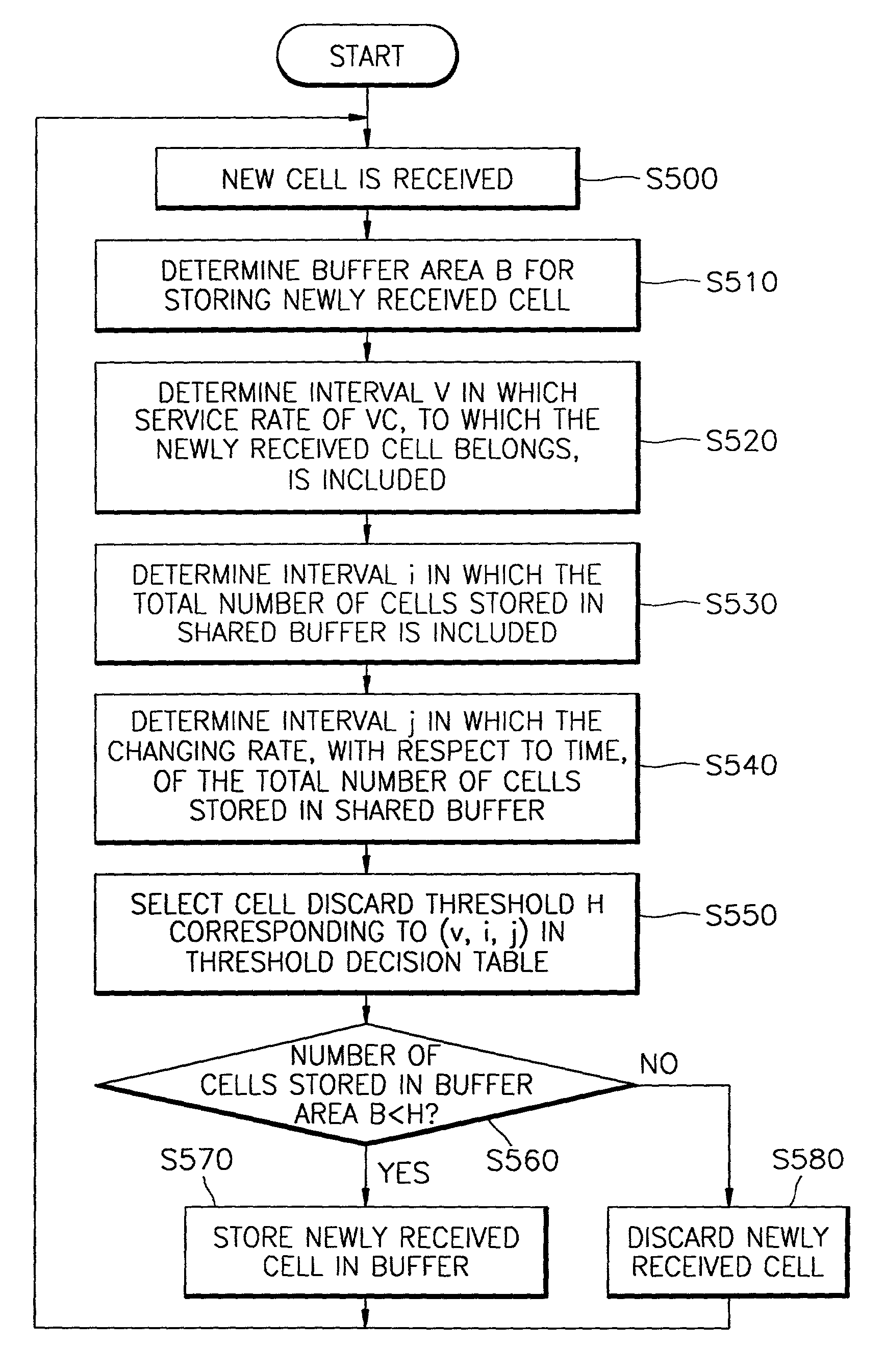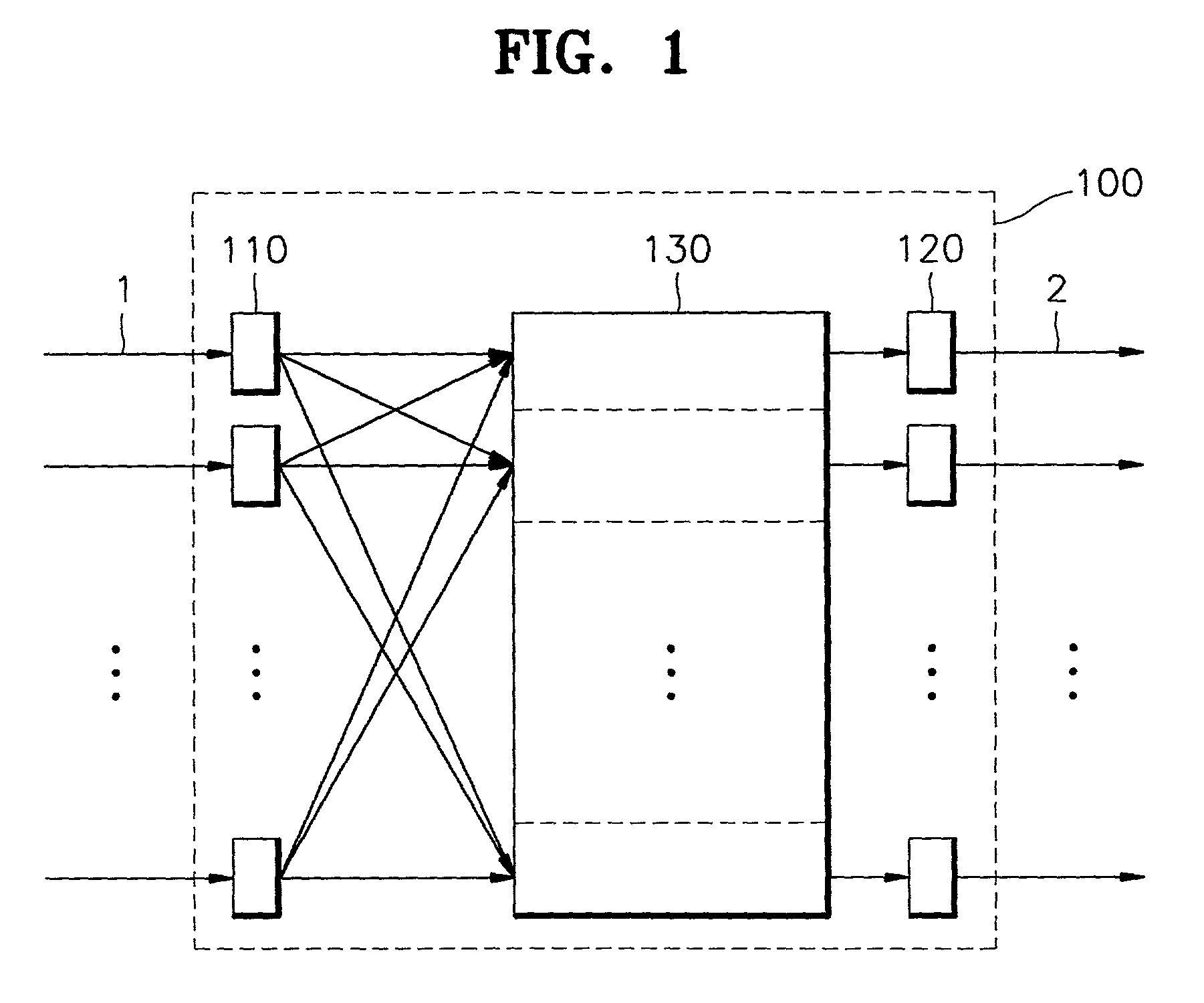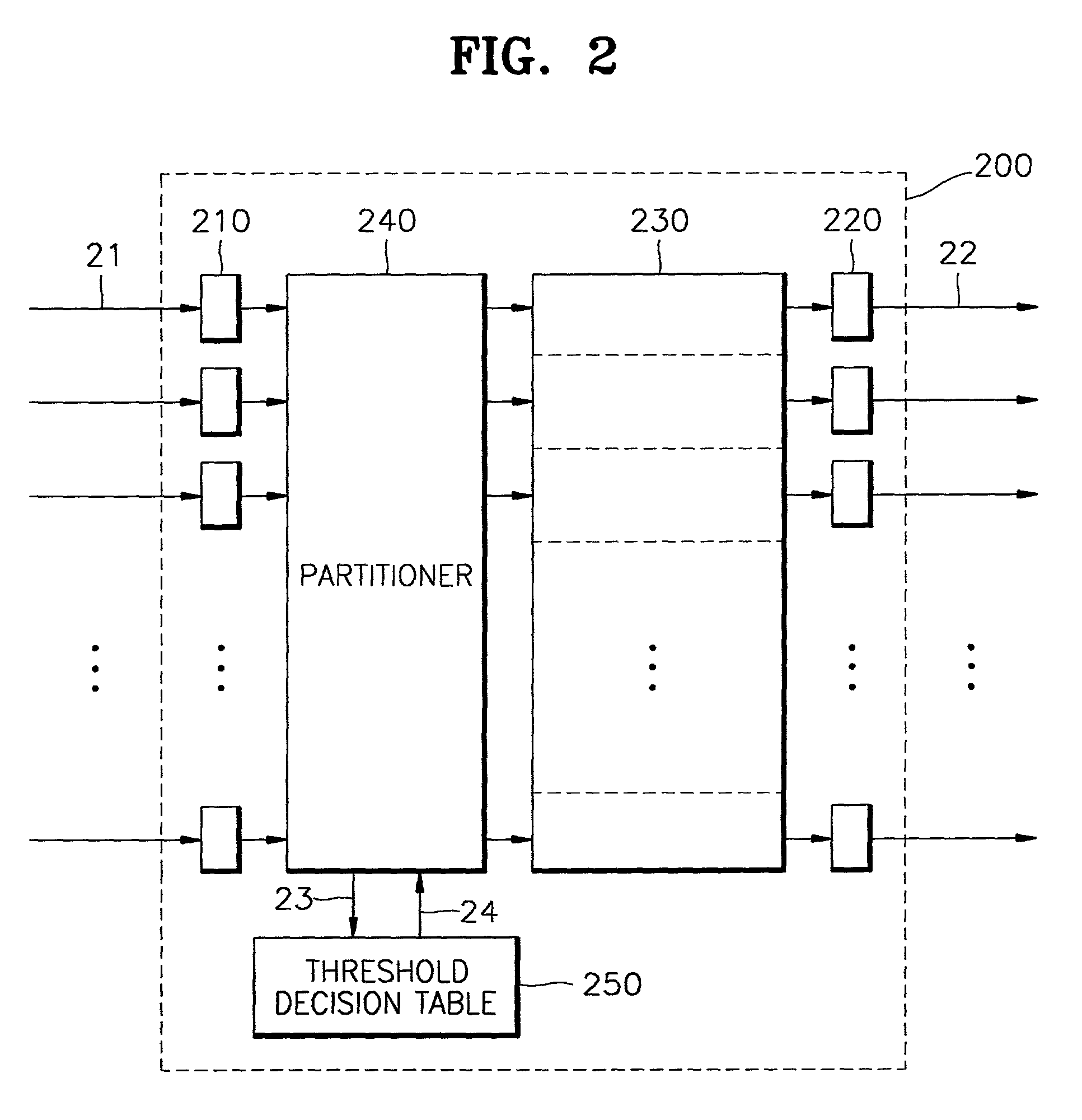Adaptive buffer partitioning method for shared buffer switch and switch therefor
a buffer switch and buffer technology, applied in the field of shared buffer switches, can solve problems such as the inability to apply the method to such traffics, the inability of the method to be actively adapted to external conditions such as backpressure, and the degraded performance of the switch
- Summary
- Abstract
- Description
- Claims
- Application Information
AI Technical Summary
Problems solved by technology
Method used
Image
Examples
Embodiment Construction
[0022]Referring to FIG. 1 which is a schematic diagram of a shared buffer switch, the shared buffer switch 100 includes a plurality of input ports 110, a plurality of output ports, and a shared buffer (or, memory) 130. Each of the ports 110 and 120 of the switch is linked to other nodes of a network. Each node receives a cell (or a packet) from a previous node and transfer the cell to a next node. A cell 1 which arrives at an input port 110 is switched according to the destination of the incoming cell, and is stored in an area of the shared buffer 130, the area corresponding to the destination. The incoming cell waits in the area before departing for a next node. The switch 100 reads a cell 2 from the shared buffer 130 for each output port 120 at each predetermined unit time, and transmits the cell to a next node.
[0023]In a network using packet switching, a Virtual Circuit (VC) can be formed by setting a group of nodes and links between a source and a destination of data. Each VC ma...
PUM
 Login to View More
Login to View More Abstract
Description
Claims
Application Information
 Login to View More
Login to View More - R&D
- Intellectual Property
- Life Sciences
- Materials
- Tech Scout
- Unparalleled Data Quality
- Higher Quality Content
- 60% Fewer Hallucinations
Browse by: Latest US Patents, China's latest patents, Technical Efficacy Thesaurus, Application Domain, Technology Topic, Popular Technical Reports.
© 2025 PatSnap. All rights reserved.Legal|Privacy policy|Modern Slavery Act Transparency Statement|Sitemap|About US| Contact US: help@patsnap.com



